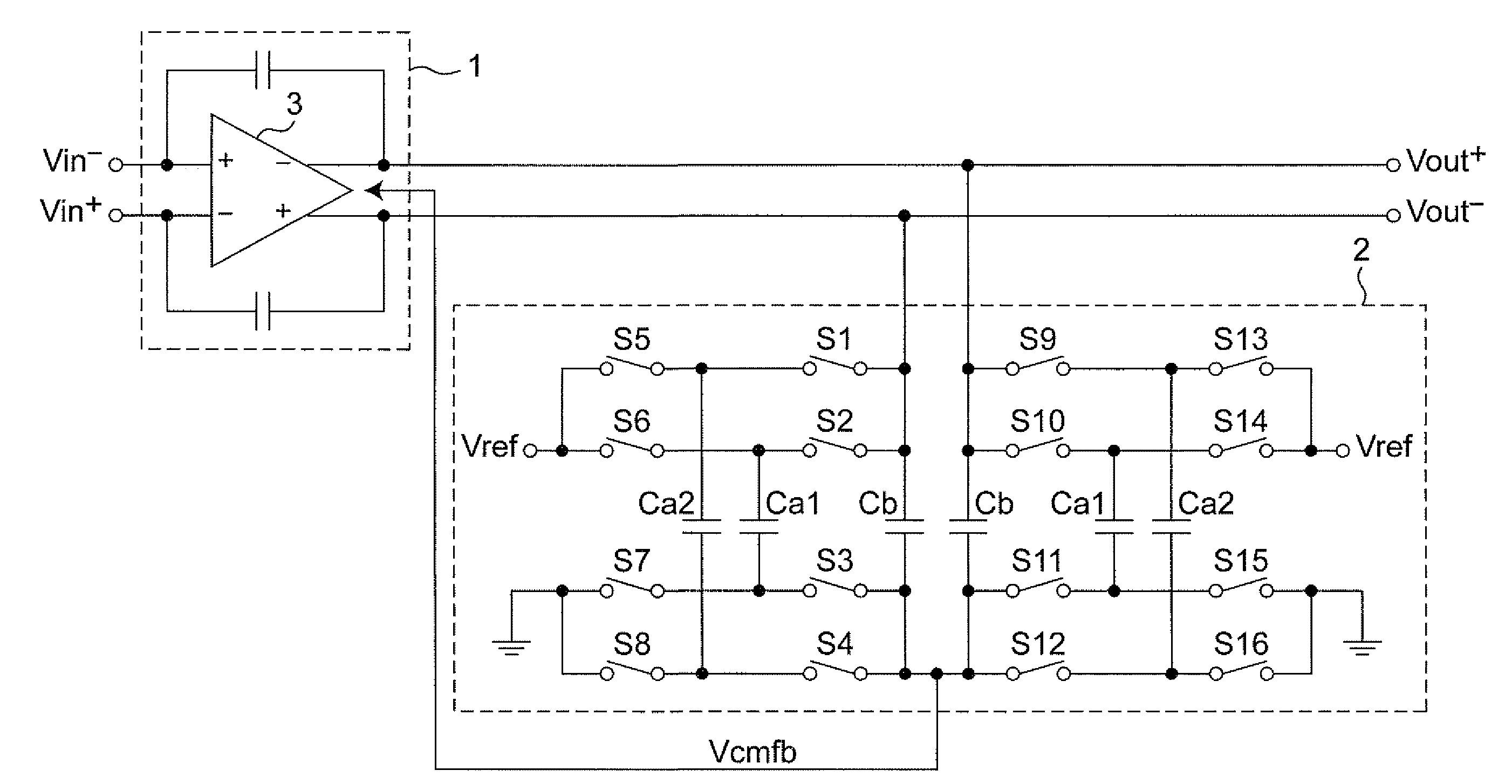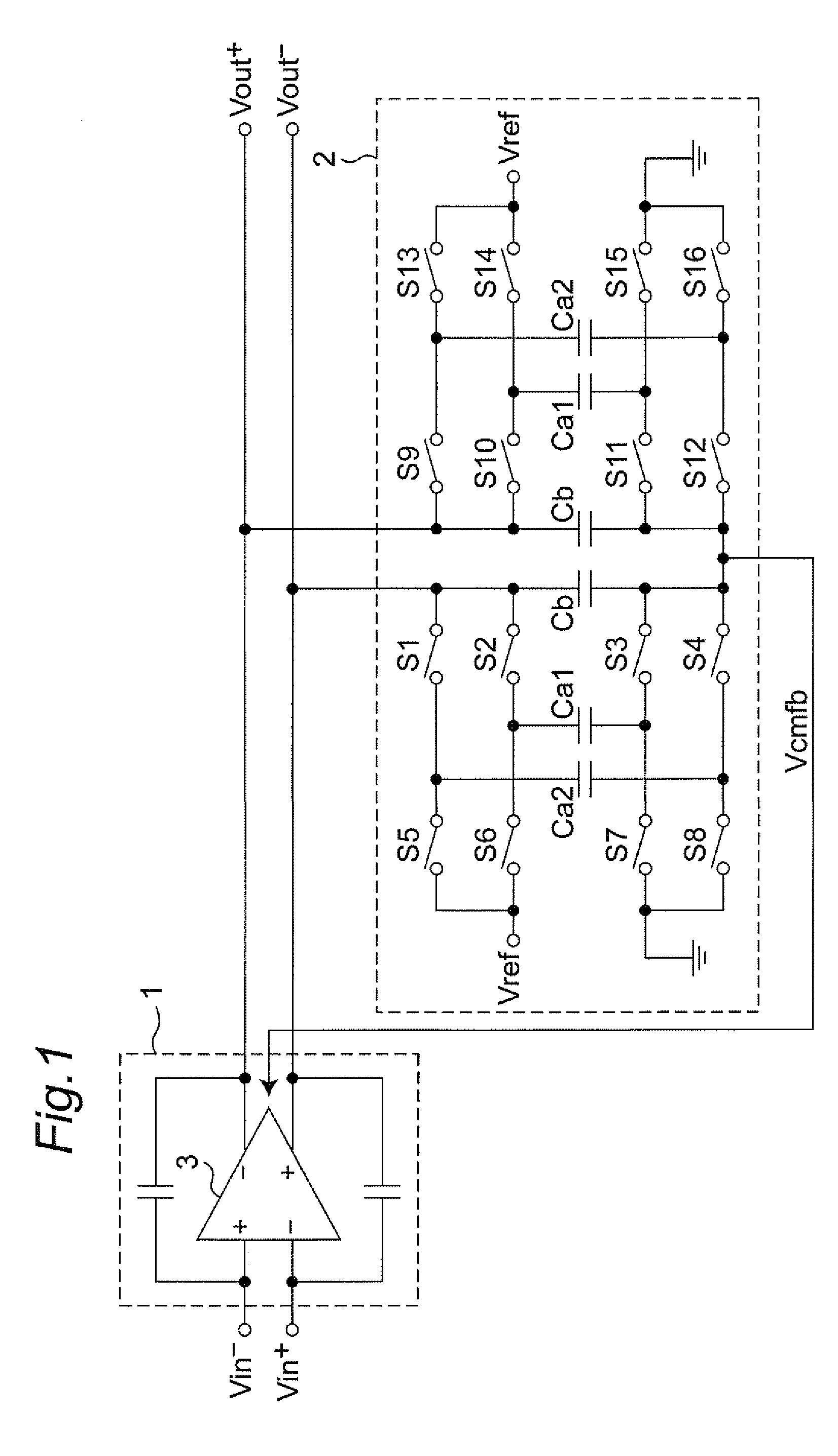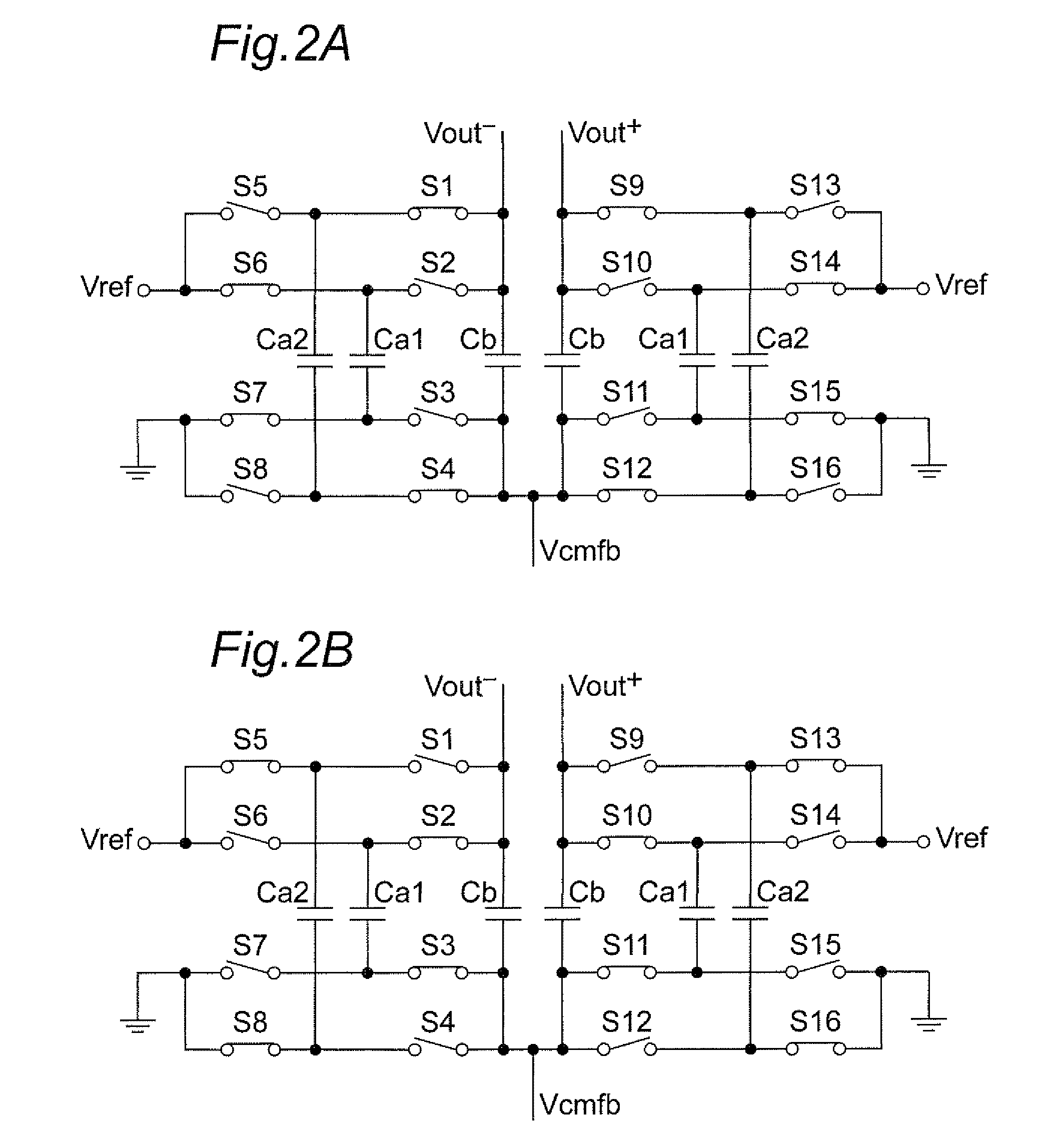Discrete time amplifier circuit and analog-digital converter
a technology of amplifier circuit and analog-digital converter, which is applied in the direction of amplifiers with semiconductor devices/discharge tubes, differential amplifiers, instruments, etc., can solve the problems of increasing current consumption, deteriorating characteristics of amplifier circuits, and increasing current consumption, so as to achieve low current consumption, simple circuit configuration, and high data transmission speed
- Summary
- Abstract
- Description
- Claims
- Application Information
AI Technical Summary
Benefits of technology
Problems solved by technology
Method used
Image
Examples
embodiment 1
[0066]FIG. 1 is a circuit diagram showing a discrete time amplifier circuit having a discrete time common-mode feedback circuit according to Embodiment 1. As shown in FIG. 1, the discrete time amplifier circuit according to Embodiment 1 comprises a differential amplifier 1 for amplifying a differential signal and a discrete time common-mode feedback circuit (hereafter simply referred to as a CMFB circuit) 2 for controlling the output voltage (output common-mode voltage Vcmo) of the differential amplifier 1 to a reference voltage Vref.
[0067]The CMFB circuit 2 according to Embodiment 1 is equipped with multiple capacitors Ca1, Ca2 and Cb and multiple switches S1 to S16. The multiple capacitors of the CMFB circuit 2 include first sampling capacitors Ca1, second sampling capacitors Ca2 and hold capacitors Cb. The first sampling capacitor Ca1 and the second sampling capacitor Ca2 alternately sample a charge corresponding to the reference voltage Vref every ½ cycle. The hold capacitor Cb ...
embodiment 2
[0099]A discrete time amplifier circuit and an AD converter incorporating the discrete time amplifier circuit according to Embodiment 2 of the present invention will be described below referring to the accompanying drawings.
[0100]FIG. 10 is a circuit diagram showing a common-mode feedback circuit (hereafter simply referred to as a CMFB circuit) 20 in the discrete time amplifier circuit according to Embodiment 2 of the present invention. As shown in FIG. 10, the CMFB circuit 20 according to Embodiment 2 is provided with multiple sampling capacitors Ca1, Ca2, Ca3, . . . , Can, two hold capacitors Cb and multiple switches. The multiple switches are switches that connect the capacitors Ca1, Ca2, Ca3, . . . , Can to the input and output sides of the CMFB circuit 20 and switches that connect the capacitors to the side of the reference voltage (Vref). Furthermore, the hold capacitors Cb are connected to the input and output sides of the CMFB circuit 20 and further connected in parallel wit...
embodiment 3
[0109]A discrete time amplifier circuit and an AD converter incorporating the discrete time amplifier circuit according to Embodiment 3 of the present invention will be described below referring to the accompanying drawings.
[0110]FIG. 12 is a circuit diagram showing a common-mode feedback circuit (hereafter simply referred to as a CMFB circuit) 30 in the discrete time amplifier circuit according to Embodiment 3 of the present invention. As shown in FIG. 12, multiple hold capacitors serving as a common-mode feedback voltage generating circuit for generating and holding the common-mode feedback voltage are formed in the CMFB circuit 30. In other words, hold capacitors Cb1, Cb2, Cb3, . . . , Cbn are connected to the input and output terminals of the CMFB circuit 30 via switches Sw1, Sw2, Sw3, . . . , Swn, respectively. The capacitance values of the hold capacitors Cb1, Cb2, Cb3, . . . , Cbn are set at different values, and either one of the hold capacitors Cb1, Cb2, Cb3, . . . , Cbn ca...
PUM
 Login to View More
Login to View More Abstract
Description
Claims
Application Information
 Login to View More
Login to View More - R&D
- Intellectual Property
- Life Sciences
- Materials
- Tech Scout
- Unparalleled Data Quality
- Higher Quality Content
- 60% Fewer Hallucinations
Browse by: Latest US Patents, China's latest patents, Technical Efficacy Thesaurus, Application Domain, Technology Topic, Popular Technical Reports.
© 2025 PatSnap. All rights reserved.Legal|Privacy policy|Modern Slavery Act Transparency Statement|Sitemap|About US| Contact US: help@patsnap.com



